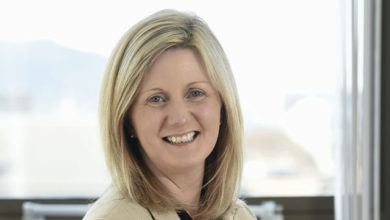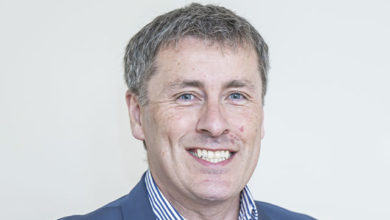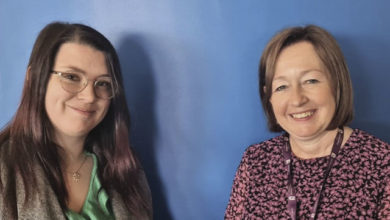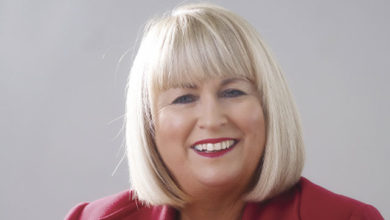Investing in communities
 A significant merger in 2011 opened up the opportunity for a new housing association to invest £50 million in communities across England. Phil Miles, Director of Regeneration and Communities with Affinity Sutton, talks to Peter Cheney about its innovative approach.
A significant merger in 2011 opened up the opportunity for a new housing association to invest £50 million in communities across England. Phil Miles, Director of Regeneration and Communities with Affinity Sutton, talks to Peter Cheney about its innovative approach.
A business with a social purpose, Affinity Sutton is one of England’s largest housing associations with 57,000 homes and 161,000 residents. Its roots go back to 1900 when Victorian philanthropist William Sutton bequeathed his fortune to a charitable trust to provide “model dwellings and houses for occupation by the poor of London and other towns and populous places in England.” The association formed in his name merged with two others – Downland and Broomleigh – in 2011 and, following his example, set up a foundation to establish a range of community projects on its residents’ behalf.
As Affinity Sutton’s Director of Regeneration and Communities, Phil Miles oversees this work but he is also keen to emphasise that it is first and foremost a social landlord. It’s important to “do the business right” – with good property management, good customer service and looking after the environment – before looking at what else can be delivered.
“When you think of the range of things that can make somebody’s life better, it’s practically everything in terms of public policy,” he comments. “We have gone through a phase of thinking through where we can add most value.”
The association has chosen to base its programmes on five themes:
1. employment and training (Ready2Work);
2. financial inclusion (MoneyMatters);
3. improving neighbourhoods (Neighbourhood Investment);
4. supporting young people (#BeTheChange); and
5. digital inclusion (GetConnected).
 The community foundation was initially endowed with £50 million and invests £4 million per annum across these areas. That investment is treated in “exactly the same way as our other services” and is also good for the business by mitigating risks, improving the value of stock, raising satisfaction and marking out Affinity Sutton as being “committed to being more than just housing.”
The community foundation was initially endowed with £50 million and invests £4 million per annum across these areas. That investment is treated in “exactly the same way as our other services” and is also good for the business by mitigating risks, improving the value of stock, raising satisfaction and marking out Affinity Sutton as being “committed to being more than just housing.”
On employment, he notes: “Getting somebody who’s third or fourth generation unemployed into work is the single best thing we can do for somebody’s life.” Thirty of the 55 staff working in community investment are involved in the Ready2Work scheme which offers training and apprenticeships and works with an employer network to identify job opportunities e.g. if a new Premier Inn hotel is about to be built. Some of its participants work in catering at Buckingham Palace but the largest employer remains Affinity Sutton itself – mainly by converting front-line roles into apprenticeships.
The financial inclusion strand helps people to avoid falling into debt. Buying a £499 TV from hire purchase retailer BrightHouse would cost £2,652 on credit but using a loan from Affinity Sutton’s partner (Leeds Credit Union) reduces that cost to £706. Residents can also receive free debt advice, apply for a hardship fund, and use online and phone banking services. Helping them to manage their finances is also in Affinity Sutton’s interest. If all residents were able to pay an extra £5 per week, it would raise an extra £2.5 million per annum in income.
Neighbourhood Investment comprises more than 50 community centres. “They are really difficult to make work but if they do work they are fantastic community assets,” Miles remarks. These can be used by local residents’ groups and charities and offer “a vast range of diversionary, arts and sports activities” for young people. The #BeTheChange programme recruits young people as ‘ambassadors’ who identify neighbourhood issues and set up social action projects in order to find solutions.
Miles explains that Affinity Sutton’s investment in communities is “core business” and increasingly makes “good business sense” as welfare reform is put into practice. The community investment essentially helps to provide extra support for people whose benefit payments are being reduced.
“The challenge for a lot of housing associations is to get to that position and maintain a high quality of service,” he comments. Setting up the foundation – on a sustainable financial footing – has given Affinity Sutton a platform for setting up high quality and accountable services which make a real difference on the ground.
“Interestingly, quite a lot of what we do is not about a physical centre,” Miles remarks. “Helping people into work and tackling financial exclusion are things that can take place anywhere.”
A good community, in his view, is one where there are high levels of employment and also “where people have real options about their futures, where they know that their children can play outside safely, where young people have a direction in life [and] where older people feel included and don’t feel frightened to go out.”
A real sense of community is present when people “feel part” of the place where they live “and defend it.” How well someone knows their neighbours is also a good measure of a community’s strength.
While social housing carries a stigma in society as a whole, Miles finds that Affinity Sutton’s residents are proud of their communities and their general attitude is: “Don’t come here feeling sorry for me. I love where I live.”





